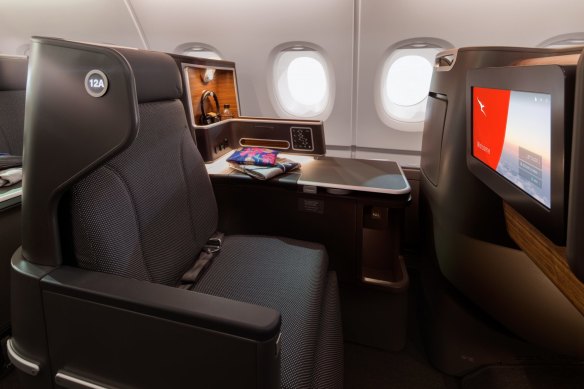Passengers warned not to fly with fully charged devices over fire risk
The United States’ Federal Aviation Administration (FAA) has warned passengers not to fully charge their devices for a flight due to increased cabin fire risk, despite many next-gen cabins featuring personal charging ports.
The US government’s aviation regulator issued the warning in a post on X (the rebranded Twitter) featuring a video snippet of an episode of the department’s podcast The Air Up There, titled ‘Fly Safe with Lithium Batteries’.
The video, featuring advice from the FAA’s fire safety branch manager Robert Ochs, has garnered nearly 37,000 views since Monday.
The accompanying caption asks flyers who charge their devices to 100 per cent before boarding to consider: “A full charge may increase the chances of a fire. If you won’t be using it on your flight why risk it?”
While the risks of lithium-ion battery-powered devices such as smartphones are nothing new, Ochs notes in the episode that, short of switching off devices completely, maintaining them at a lower battery level for the flight helps to lower the risk of overheating and causing a fire.
“If [the device is] at 30 per cent, say, or lower, it’s less likely to undergo thermal runaway and the reaction would be less severe,” Ochs can be heard saying in the clip.
A fully charged lithium-ion battery carries a higher risk of thermal runaway, the process in which a lithium-ion cell enters an uncontrollable self-heating state.
Associate professor Mark Gregory, a technology expert at RMIT University, describes it as “a build up of heat that cannot be dissipated quickly enough to prevent gas being given off, a fire or explosion.”

Jetstar’s new fleet of Airbus A320neos are among the next-gen aircraft offering personal USB charging ports for devices.Credit: Craig Platt
“Exposure to high temperature or pressure can have adverse effects on fully charged lithium-ion batteries,” said Gregory. “Cell reversal can occur when a battery is stressed causing a permanent electrical short that can, in some situations, lead to thermal runaway and a resulting fire. The batteries contain electrodes that are highly flammable.”
There’s evidence pointing to lithium-ion batteries performing better when charged regularly between 30-80 per cent, according to Gregory.
Incidents involving the batteries are becoming more common due to a combination of wider usage, manufacturer issues and device misuse. Product defects and ageing devices are also associated with an increased risk.
The hazards of transporting these batteries on aircraft are well documented, and it’s common practice for cabin crew to include a boarding announcement asking passengers who drop a device to notify crew and not attempt move their seat in an effort to find it.

The risk of device battery fires is higher in business cabins, as smartphones can slip into the seat mechanism while reclined.Credit: Qantas
In June 2016, a Boeing 747-438 Qantas flight from Los Angeles reported an incident in which a passenger in business class advised crew of a missing personal device, and in trying to retrieve it with the crew member crushed the device, causing it to ignite and trigger a basic fire drill procedure.
The FAA’s safety warning comes at a time in which airlines are increasingly integrating personal devices into the inflight experience.
It’s common practice for commercial carriers to issue electronic boarding passes to smartphones, and many are retiring seatback screens with onboard entertainment in favour of better wireless systems and content streamed direct to passengers’ devices.
New Australian carrier Bonza requires passengers order meals and drinks through their app, while aircraft fitted with personal USB charging ports are becoming the industry standard. Having a powered device in transit has never been more crucial.
But does this translate to more onboard incidents involving the batteries?
In Australia, the Civil Aviation Safety Authority (CASA) works closely with airlines and other regulators to identify emerging risks presented by advancements and the expanded use of technology, including those cited above.
A CASA spokesperson said that while they understand the rationale behind the FAA asking whether a device needs to be fully charged, of larger concern is the risk of devices being mislaid in seats and overheating.
“There is a greater risk presented by portable devices slipping into the seat mechanism and being damaged, leading to either an unusable phone, or potentially the battery overheating,” a CASA spokesperson said.
Airline cabin crew are trained to deal with onboard emergencies involving fire and smoke on board, and passengers are advised to notify a crew member and follow instructions when required.
Sign up for the Traveller newsletter
The latest travel news, tips and inspiration delivered to your inbox. Sign up now.